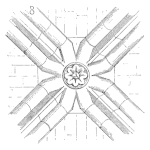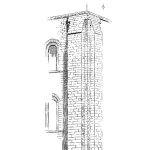
Accelerated Life Testing (ALT) is a method used in reliability engineering to assess the lifespan and performance of a product under accelerated stress conditions. The goal is to uncover potential faults and failures in a shorter time frame than would be possible under normal operating conditions. ALT is particularly useful when the product’s expected lifespan is long, and waiting for failures to occur naturally is not feasible.
In the context of Design Verification (DV), ALT can help shorten the testing time by inducing failures more quickly than under normal conditions. This allows engineers to identify and address potential issues earlier in the product development process, thereby improving the product’s reliability and reducing the time to market.
For example, consider an aluminum part used in automotive applications. The primary stressor for this part would be cyclic mechanical loading, which can cause fatigue over time. An ALT would subject the part to this stress at an accelerated rate, causing it to fail more quickly than it would under normal conditions. By analyzing the part’s response to the test, engineers can predict its lifespan and maintenance intervals under normal service parameters.
Aluminum 6061 is a widely used alloy in the automotive sector due to its excellent strength-to-weight ratio, corrosion resistance, and weldability, making it suitable for various applications including frame components, wheels, and suspension parts.
Yield Strength and Stress Levels
The yield tensile strength of 6061 aluminum alloy is 276 MPa (40,000 psi) please see (Fig. 1)
Based on this, we define three stress levels for the ALT:
- First Stress Level (90% of Yield Strength): This level is set at 90% of the yield strength, which calculates to 248.4 MPa.
- Second Stress Level (80% of Yield Strength): This level is set at 80% of the yield strength, which calculates to 220.8 MPa.
- Third Stress Level (70-75% of Yield Strength): For a range, we consider the average, setting this level at 72.5% of the yield strength, which calculates to 200.1 MPa.
For every stress level 3 samples was failed, fitting the Weibull distribution and choosing different Reliability and confidence level, (pay attention axes are in Logarithmic scale, see Fig. 2):
The blue step function (see Fig.3) appears to represent the stress amplitude levels and the corresponding number of cycles at each level that the part is expected to experience throughout its life. The steps in the function indicate changes in stress amplitude, with each horizontal segment corresponding to a period where the stress amplitude remains constant.
Visually, the blue step function does not intersect or cross the black solid line labeled as R99.9 C99.9. This suggests that the stress levels and the number of cycles at each level are within the bounds of the R99.9 C99.9 reliability and confidence level.
In other words, the part is expected to withstand the stress levels represented by the blue line without reaching the failure criteria associated with the R99.9 C99.9 line.
According to Miner’s rule, the cumulative damage is calculated by summing the ratios of the number of cycles experienced at each stress level to the number of cycles to failure at that stress level. Since the blue line does not cross the black line, it implies that the cumulative damage DD is less than 1, meaning the part is not expected to fail within the life cycle represented by the blue line, given the reliability and confidence level of R99.9 C99.9.
The ability to predict failures and estimate product lifespan through ALT enables companies to enhance product design, improve quality, and ensure reliability before market release. It also facilitates the identification of potential failure modes and the development of maintenance schedules, which are crucial for safety-critical components.
Furthermore, ALT can be tailored to specific reliability and confidence level targets, such as R99.9 C99.9, allowing engineers to validate that products meet stringent reliability standards.
By leveraging the insights gained from ALT, companies can achieve a competitive edge by reducing time-to-market and minimizing the risk of costly recalls or customer dissatisfaction due to product failures.
The process of conducting an ALT typically involves the following steps:
Define the test objectives: This could be to identify failure modes, estimate the part’s life expectancy, or verify design margins.
Select the stressors: These are the types of stresses the part will experience in service. For an aluminum part, the primary stressor would be cyclic mechanical loading.
Develop the test plan: This involves designing the test to apply the selected stressors in a controlled and measurable way.
Conduct the test: The test is run according to the plan, and the part is monitored for signs of fatigue. The test continues until the part fails or reaches a predetermined number of cycles.
Analyze the data: The results are used to estimate the part’s life under normal conditions. This can involve statistical analysis and modeling.
In conclusion, ALT is a valuable tool in reliability engineering and DV, allowing for the prediction of product lifespan and the identification of potential issues in a shorter time frame than under normal conditions. This can lead to improved product reliability, reduced testing time, and faster time to market.

















